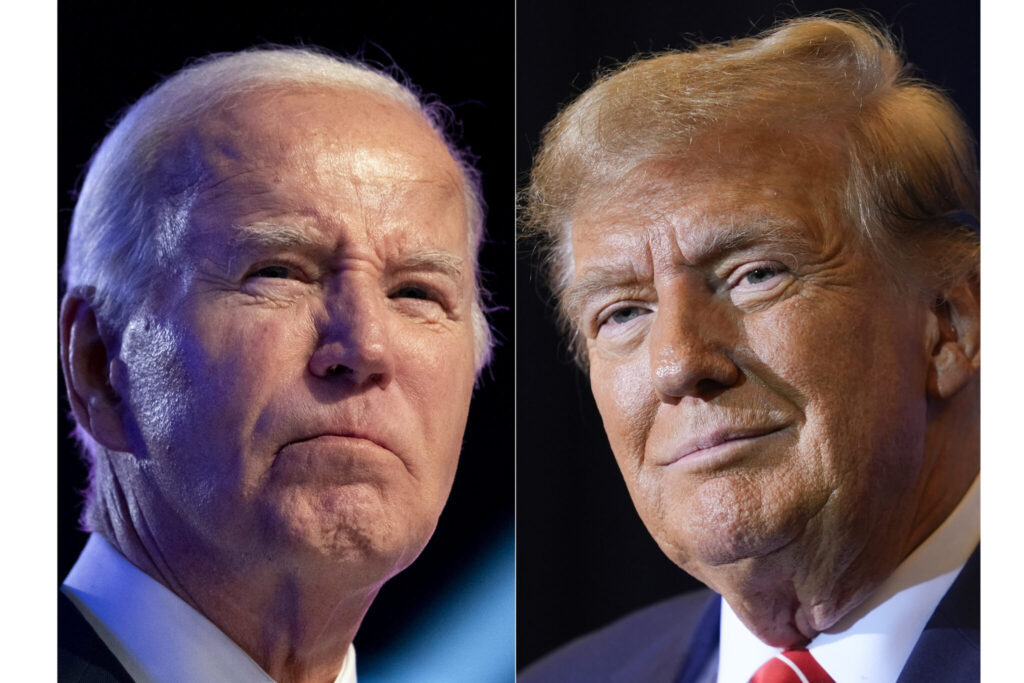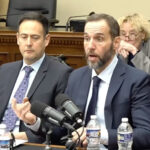Based on the momentum from this month’s presidential contests in Iowa and New Hampshire, Joe Biden and Donald Trump appear poised to give the nation a sequel to the 2020 election — but even strong victories this week for both men revealed weak spots for each. AP VoteCast surveys conducted in Iowa and New Hampshire show that Trump, the former president, has nurtured a fervent loyalty among the Republican base. But that loyalty exacts a price: He has so far not gained traction with the college graduates and suburbanites who could be decisive in November’s general election.
Quick Read
- Biden and Trump Poised for Rematch: Both Joe Biden and Donald Trump show strengths and weaknesses as they seem set for a 2020 election sequel.
- Trump’s Fervent GOP Loyalty: AP VoteCast surveys in Iowa and New Hampshire indicate Trump’s strong loyalty among the Republican base but lack of appeal to college graduates and suburbanites.
- Biden’s Diverse Coalition: Biden benefits from a broad Democratic coalition, but faces potential splits over issues like the Middle East conflict and immigration.
- High Stakes for National Identity: The election outcome could significantly impact how the U.S., a powerful and wealthy nation, perceives itself amid pandemic fatigue and political dysfunction.
- Trump’s Limited Appeal: Trump retains strong support among non-college-educated white voters but struggles with moderates, independents, and suburban voters.
- Biden’s Surprising Economic Approval: Despite high inflation, Biden sees strong economic approval among Democratic voters in New Hampshire.
- Age and Generational Divide for Biden: Younger Democratic voters show less enthusiasm for Biden, with concerns about his age.
- Policy Fissures in Biden’s Coalition: Biden’s handling of the Israeli-Palestinian conflict reveals divisions within his voter base.
- Attacks as Key Strategy: Both candidates may focus on attacking opponents, with Biden highlighting Trump’s extremism and Trump questioning Biden’s stamina.
- Coalition Development Crucial: Winning the election depends on how each candidate’s coalition evolves, focusing on different voter demographics.
- AP VoteCast Methodology: The survey conducted by AP-NORC involved 1,989 Republican and 915 Democratic primary voters, with a margin of error of ±3.5 points for Republicans and ±4.6 points for Democrats.
The Associated Press has the story:
AP VoteCast: What the 1st contests tell us about Trump and Biden coalitions
Newslooks- WASHINGTON (AP) —
Based on the momentum from this month’s presidential contests in Iowa and New Hampshire, Joe Biden and Donald Trump appear poised to give the nation a sequel to the 2020 election — but even strong victories this week for both men revealed weak spots for each.
AP VoteCast surveys conducted in Iowa and New Hampshire show that Trump, the former president, has nurtured a fervent loyalty among the Republican base. But that loyalty exacts a price: He has so far not gained traction with the college graduates and suburbanites who could be decisive in November’s general election.
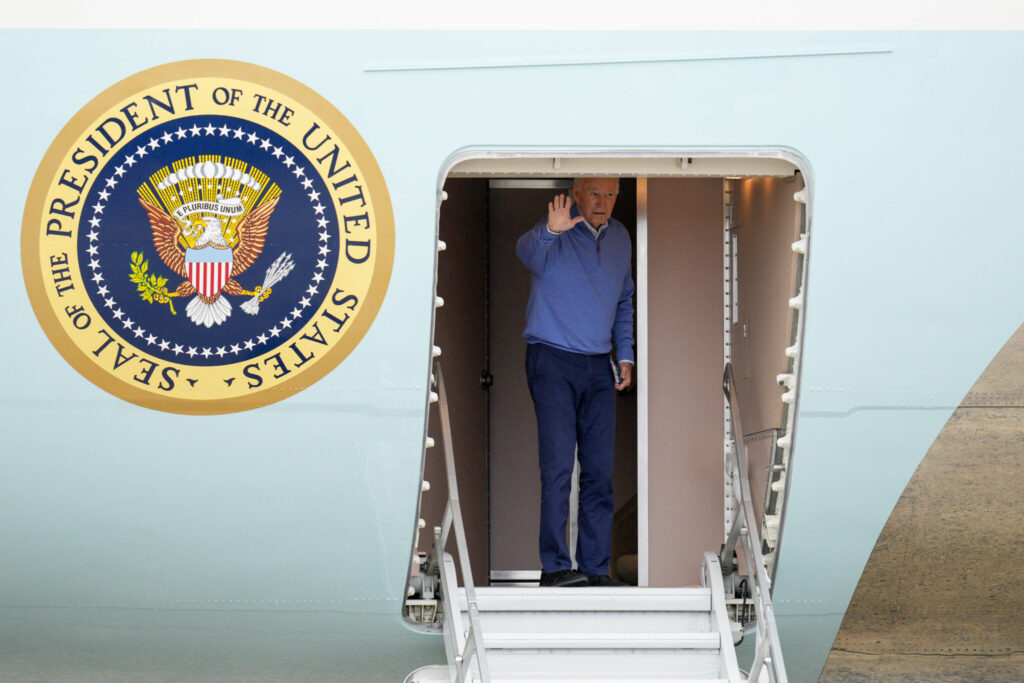
Biden, the current president, has enjoyed the benefit of a broad and diverse Democratic coalition. Yet the breadth also gives his coalition a brittleness, with differences over the conflict in the Middle East and immigration possibly splitting the voter bloc.
At stake is not just control of the presidency, but how the world’s wealthiest and most militarily powerful nation sees itself. The divides in the population have set a course for an uncertain future, one in which a group of voters worn down by the pandemic and political dysfunction may well need to choose between greatly diverging paths – again.
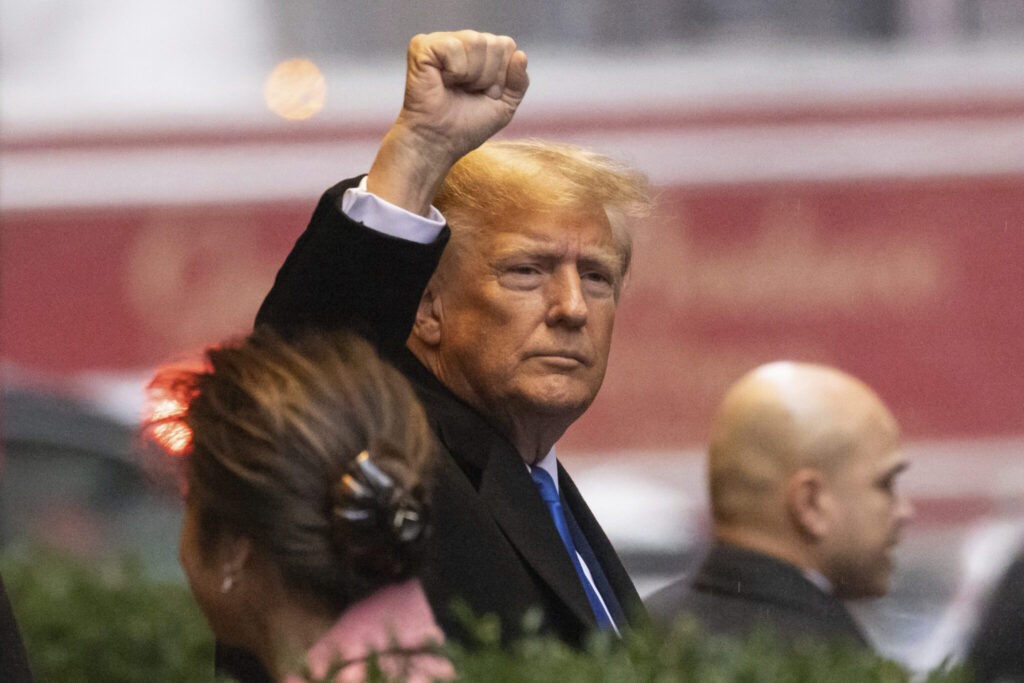
AP VoteCast is a survey of 1,989 New Hampshire voters who took part in the Republican primary and 915 Democratic primary voters. The survey was conducted by The Associated Press-NORC Center for Public Affairs Research.
THE LIMITS OF TRUMP’S APPEAL
Many Republicans who once idolized Abraham Lincoln and Ronald Reagan are now stepping in sync with the 77-year-old Trump, who has recast the party in his own image.
States like New Hampshire and Iowa are full of voters from small towns and rural communities. The majority don’t have college degrees. Nearly all are white. In 2020, AP VoteCast found that 43% of all voters nationwide in the general election were white and without a college degree. Trump won a resounding 62% of this group four years ago, a base that makes him formidable within the GOP and beyond.
The polling shows these voters like his messages on restricting immigration, erecting a wall along the Mexican border and pumping out more oil and natural gas within the United States. But those policy stances also stir controversy with voters who see immigration as a positive, border walls as ineffective if not evil and fossil fuels as worsening the damage from climate change.
For all his rambunctious rallies and speeches, Trump failed to win the national popular vote in 2016 or 2020. The polling shows he continues to repel many college graduates and self-identified political moderates.
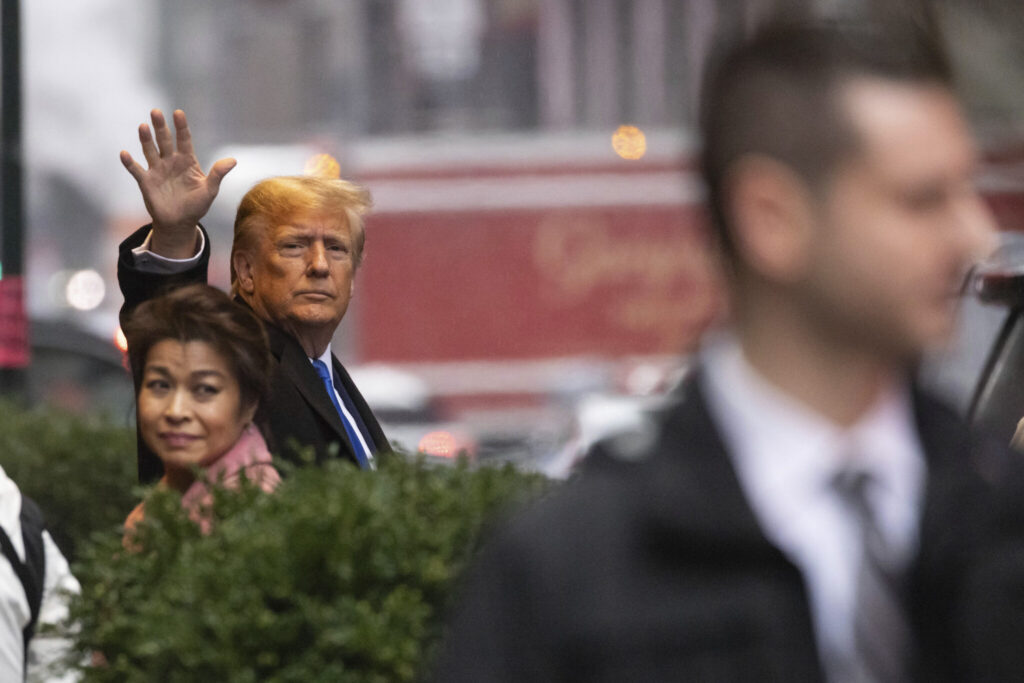
In New Hampshire, Trump lost a majority of moderates and about two-thirds of those who identify as independents. He lost about 6 in 10 who have college degrees, and he’s shown a persistent vulnerability among voters living in suburbs.
The New Hampshire results offer insights into November’s possible national electorate, as the state allows people unaffiliated with either major party to participate in its primaries. Nearly half of the GOP primary participants were unaffiliated, and Trump appears not to have won them over.
Among those voting in New Hampshire’s Republican primary, a solid third said they would not vote for Trump in November. Nearly half – including some who would still vote for him in the general election – said they would be dissatisfied if he were the nominee.
Meanwhile, Trump’s final remaining major rival for the GOP nomination faces a different math problem: Former South Carolina Gov. Nikki Haley held broader appeal among moderate and college-educated voters and those who have doubts about Trump’s ability to win in the general election. But she has little support within the GOP base. That leaves her with an ever-narrowing path to the nomination, and, if she did prevail, a different general election challenge in turning out core Republicans.
IS BIDEN’S COALITION SPREAD TOO THIN?
Biden’s name was not on the ballot in New Hampshire’s primaries. The Democrats moved their first official presidential contest to South Carolina, leaving New Hampshire to proceed with a largely symbolic event that required his supporters to write in his name.
In the months leading up to the primary, Biden showed potential weaknesses in separate polling of U.S. adults by The Associated Press-NORC Center for Public Affairs Research. High inflation had hampered his public approval, while his policy wins on infrastructure, computer chips and addressing climate change did little to excite voters.
New Hampshire did deliver a pleasant surprise for Biden. It showed that 8 in 10 Democratic voters approved of his economic leadership, which is slightly higher than his national approval among Democrats on the issue in AP-NORC polls. That optimism comes amid data showing that the economy grew briskly in 2023 as inflation eased dramatically and hiring was solid.
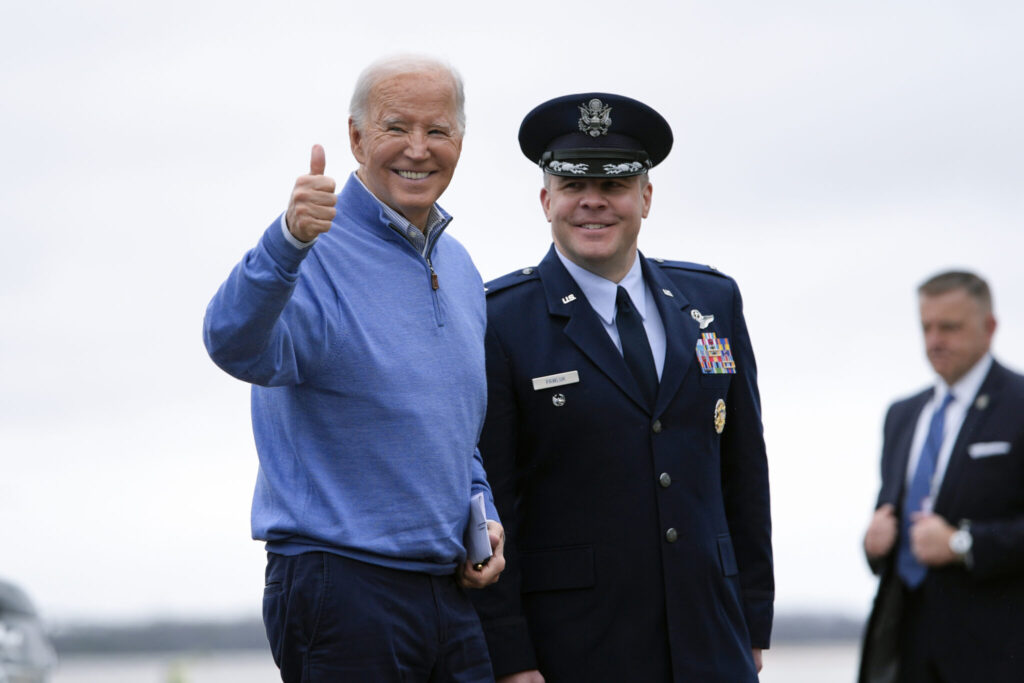
Nearly 9 in 10 of those voting in the Democratic primary said they would vote for Biden in November. Still, Biden failed to win over a majority among the small set of unaffiliated voters who chose to cast a ballot on the Democratic side.
And the 81-year-old Biden struggled with younger segments of the party. Among Democrats under 45, only about half wrote in Biden’s name. By comparison, about 7 in 10 Democratic voters older than 45 backed him in New Hampshire. About 6 in 10 of those younger voters say Biden is too old to serve another term, while about 6 in 10 older voters disagree.
There are limits to what his primary win can say about the strengths of Biden’s coalition. In 2020, 26% of general election voters were non-white and Biden won 73% of that group, an edge that helped him beat Trump. New Hampshire’s mostly white population provides few details about how those voters are thinking.
Still, New Hampshire showed some fissures on policy issues. Voters were split on whether to approve or disapprove of how he’s handling the ongoing Israeli-Palestinian conflict, and only about half of those who disapprove of his approach voted for him.
WHAT’S TO COME
There are still plenty of primaries, lots of speeches, a pair of party conventions and a plethora of ads and social media posts ahead.
But as the field shrinks, there are signs that the key strategy will be to attack opponents. Biden is already warning of parallels between Trump’s statements and Nazi rhetoric, in addition to blaming Trump for the overturning of abortion protections in Roe v. Wade. Trump is already saying that Biden’s age means he lacks the stamina to be president.
The race will depend on how each candidate’s coalition develops state by state in an effort to win the needed 270 electoral college votes. In that regard, New Hampshire provides a glimpse into the strategies in the coming months.
Trump could try to win by pushing up his numbers with white voters without college degrees. But Biden could try to improve his standing with these voters by touting his own blue-collar backing from labor unions.
The Democratic president has made student debt forgiveness a priority to appeal to college graduates and young voters, but the latter group appears less than enamored with him. Trump’s campaign has seen the potential to make inroads with voters of color, a group that has overwhelmingly backed Democrats in past elections.
The fundamental puzzle confronting both campaigns is how to build a winning coalition. Their choices will become clearer as a divided country gets closer and closer to November’s election, when the numbers will unmistakably tell whether they succeeded or fell short.
___
AP VoteCast is a survey of the American electorate conducted by The Associated Press-NORC Center for Public Affairs Research for AP and Fox News. The survey of 1,989 Republican primary voters and 915 Democratic primary voters was conducted for six days, concluding as polls close. Interviews were conducted in English and Spanish. The survey combines a random sample of registered voters drawn from state voter files and self-identified registered voters selected from nonprobability online panels. The margin of sampling error for voters is estimated to be plus or minus 3.5 percentage points for Republican primary voters and plus or minus 4.6 points for Democratic primary voters.

